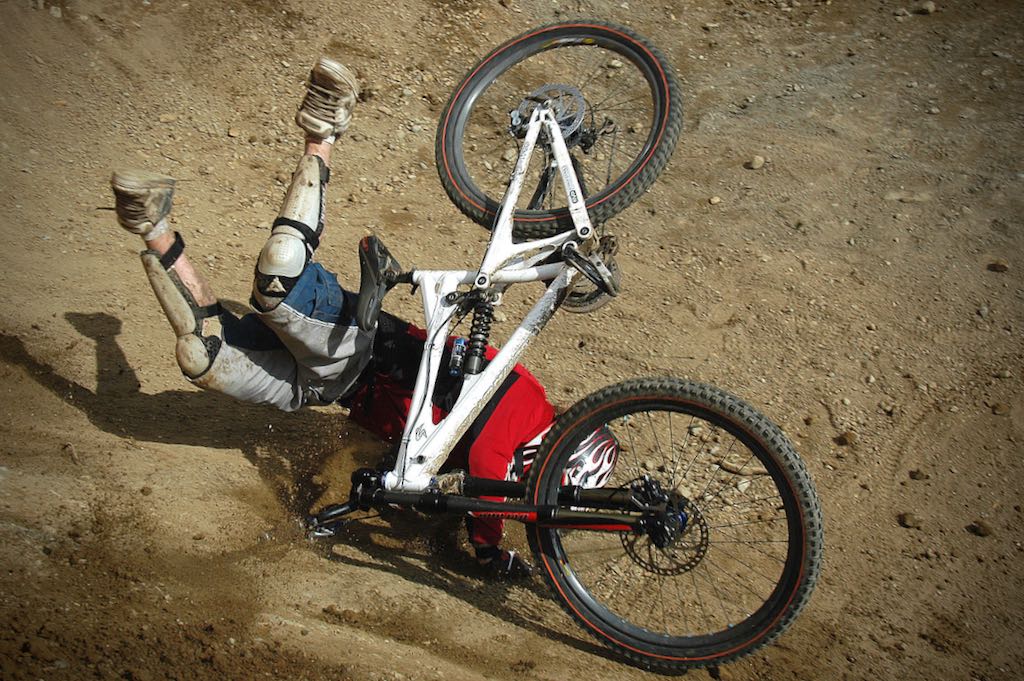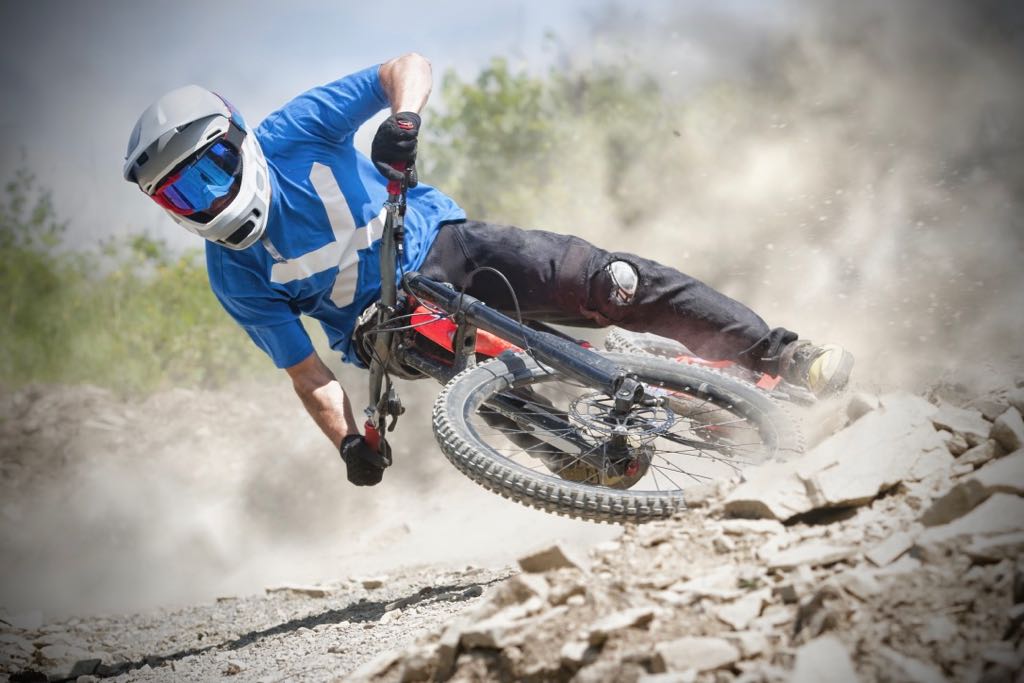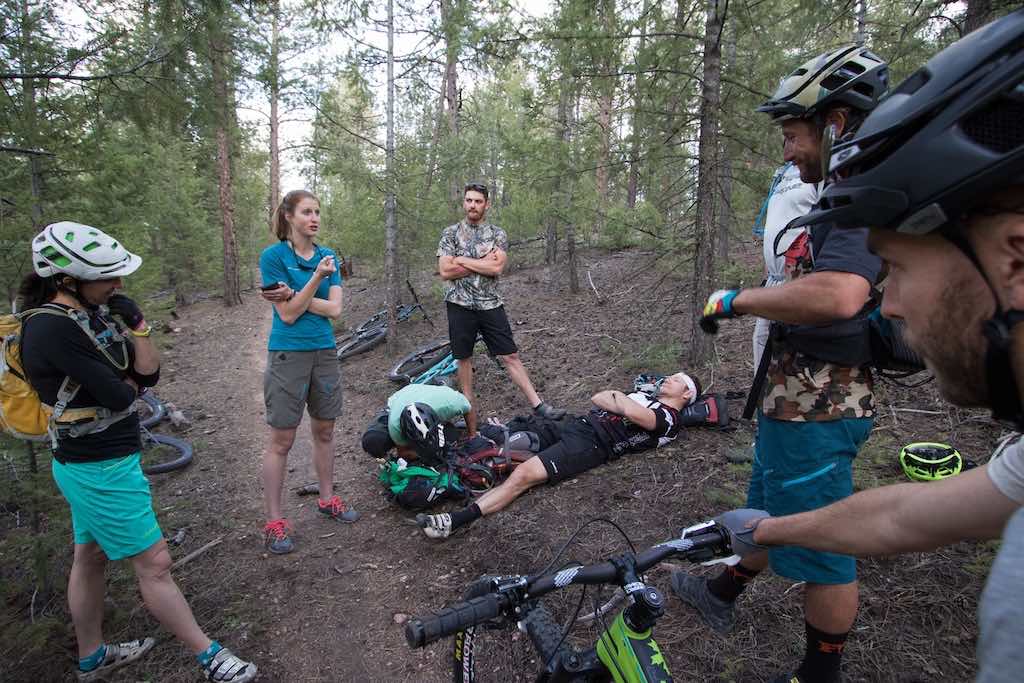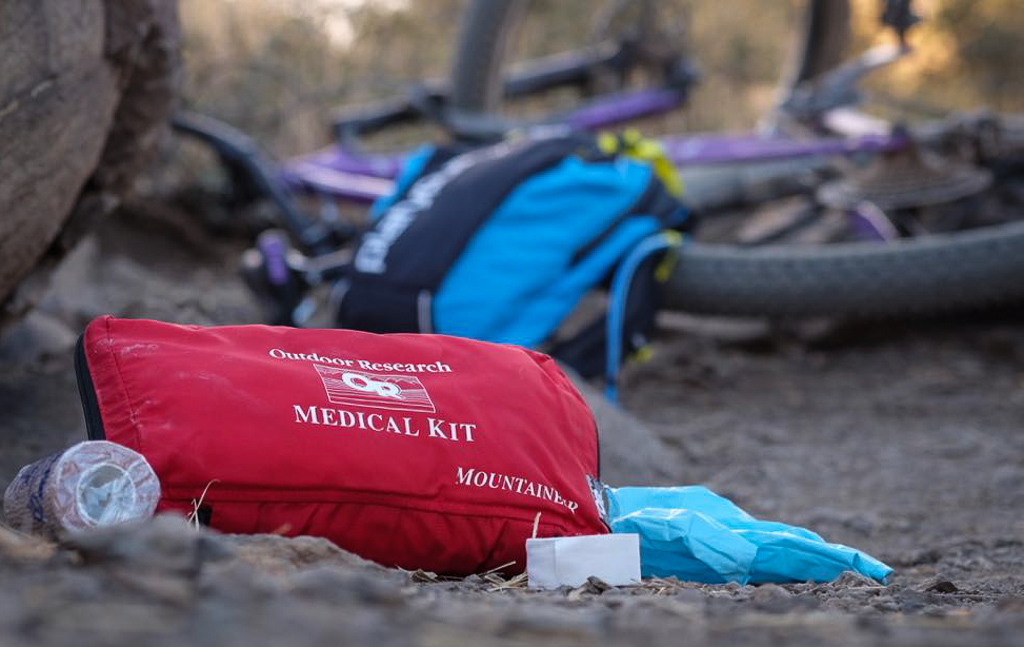Welcome to the Bikerumor First Aid Series, where we’ll explore common cycling injuries and what to do if you or your riding partner wreck. In this first installment, we look at the five most common MTB injuries. Followup stories will provide in depth solutions to help you get back to the trail head, recommended first aid equipment to carry with you, and more. If you have specific questions, leave them in the comments and we’ll answer those in future articles.
There are two types of mountain bikers—those who have crashed, and those who will. It doesn’t matter how honed your skills are, eventually good judgment and control give way to poor decisions and gravity.
Chances are you know someone, if not yourself, who has taken a significant spill. Most of us walk away with little more than a few bruises, cuts, and scrapes. While those qualify as injuries they usually don’t keep us off our bikes for long. But mountain biking has proven capable of serious injury—or worse.
Two studies conducted in the last few years have compiled hundreds of crashes to determine which injuries are most common. The data varies slightly but proves mountain bike crashes produce predictable outcomes. The information gathered can help riders better prepare to be first on the scene. It might even help us mitigate injury.
In 2012 a study published in Wilderness and Environmental Medicine recorded injuries treated at the clinic near the Whistler Mountain Bike Park. They documented the medical treatments of 772 patients. Patients—is the operative word. Mountain bikers are a tough lot and many riders never make it to a medical facility. They either tough it out or have injuries they deem unworthy of professional attention. In the United States, many riders don’t seek help for fear of incurring costly medical bills.

In the WEM/Whistler study, the most common injury was a broken bone. Hands, wrists, arms, and shoulders made up the bulk of the 442 fractures they addressed. Broken clavicles, the cyclist’s favorite fracture, claimed 122 riders. Broken wrists took out 109 more. Life-threatening spine and neck breaks ended the season for 23 people. The amazing takeaway from that number is the fact only 8 patients were brought in on a stretcher. Due to the nature of the terrain, they also saw a large number of head injuries. Nearly one in seven patients suffered some degree of brain trauma.
A more recent study recorded injuries within the National Interscholastic Cycling Association (NICA). A comprehensive project involving a network of sports physicians, first responders, and the University of Utah, NICA is using the statistics to help make the league safer. Despite the narrow focus of the sample set, which only includes school-age riders and a handful of adult coaches, the initial data is telling. The official findings are not complete, but it appears their top five injuries align with the WEM/Whistler report.
The NICA Safety Study’s parameters include only injuries which required medical attention, forced riders into a period of recovery, and/or resulted in time away from work or school. Their top five injuries include:
- Head trauma and brain injury
- Fractured hand and/or wrist
- Fractured forearm
- Trauma to the face
- Fractured shoulder or clavicle
One of the medical professionals assisting NICA’s efforts is Flynn George, the founder of Backcountry Lifeline. His organization provides riders with the first-aid skills necessary to respond to victims of a bike crash. According to George, less than 15% of his course participants have received prior first-aid training—of any kind. Considering brain injury tops both the WEM/Whistler and NICA studies, that’s a concerning statistic.
Causation and Avoidance

In 2016 I interviewed the lead patroller at one of the country’s busiest mountain bike parks. My first question was direct: What is the leading cause of mountain bike crashes? His answer was equally pointed, “People make stupid choices.” By his assessment, injuries are often avoidable. In most scenarios crashes are the result of people riding above their skill level. They’re either pressured to keep up with more experienced riders, are on terrain above their abilities, or pushing the envelope to impress their buddies. Velocity is almost always the catalyst of a catastrophic day-ender. As the lead patroller put it: Crashes inevitably occur when a rider’s speed exceeds their skill level.

According to the WEM/Whistler statistics, one way to avoid injury is to not be a 26-year-old male. Most studies, and anectotal evidence, confirm the tendency for ripe-aged men to crash with more frequency and enthusiasm than women of any age. No real surprise there.
In the coming weeks, we’ll revisit these five common injuries and get expert advice on how to treat them on the trail. It will give all of us an opportunity to evaluate our level of preparedness and build out our first aid kits.
In the meantime, keep the rubber side down and tell us about your worst crash.
Author’s note: For nearly a decade I managed bicycle tour companies around the world. I’ve witnessed everything from cardiac arrest and broken legs, to an ejected eyeball. Just three weeks ago while riding a motorcycle in southern Patagonia, a companion crashed and shattered his hand, wrist, and forearm like it was made of peanut brittle. I was his only caregiver while on the side of a remote road in Chile’s frontier. As someone with a considerable amount of first responder training I can tell you—it’s never enough—but any training is better than none.
